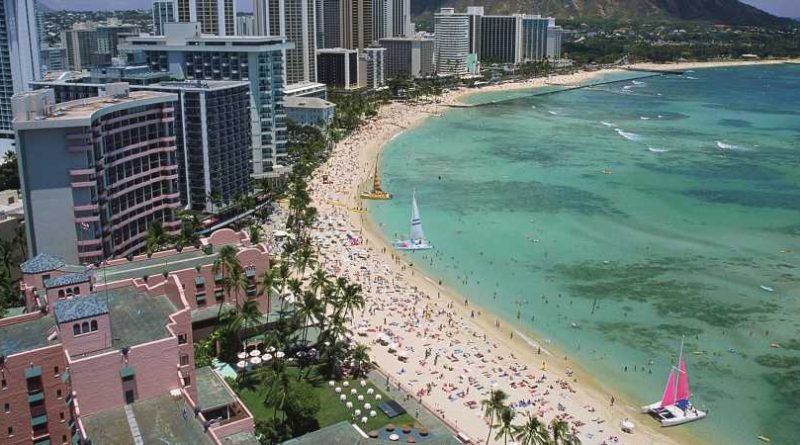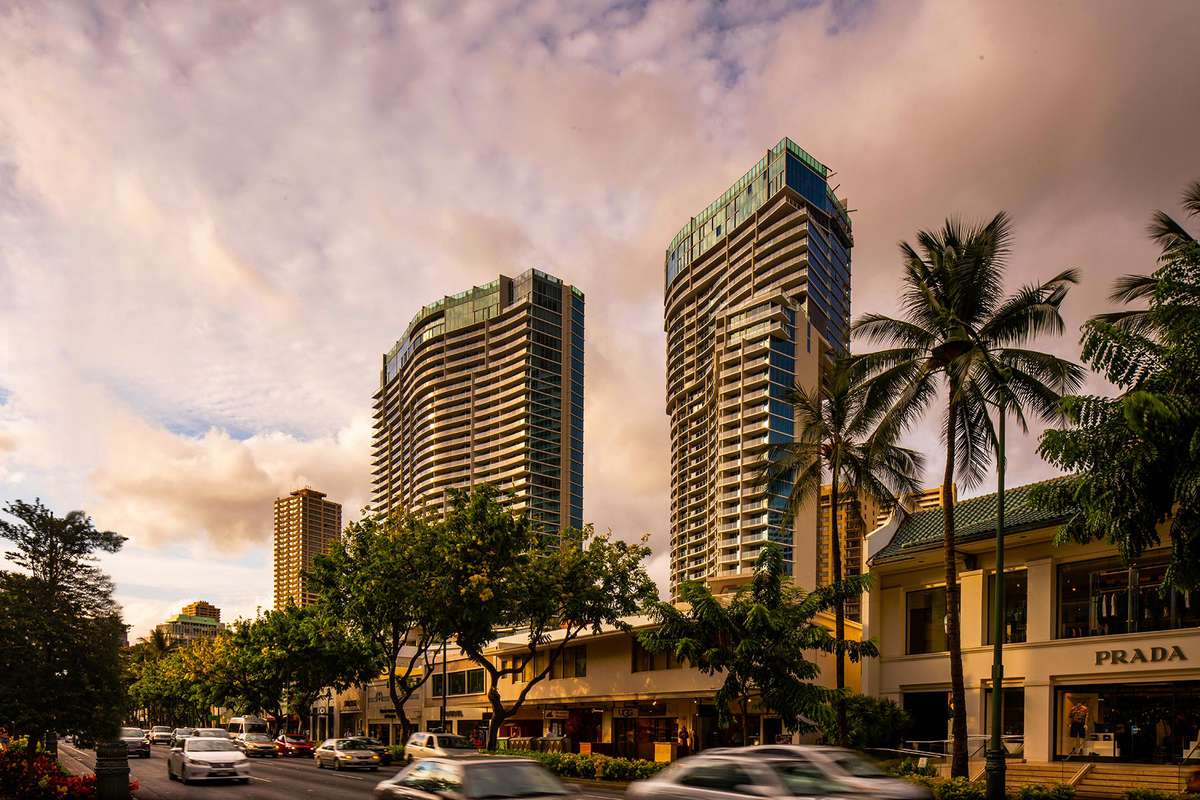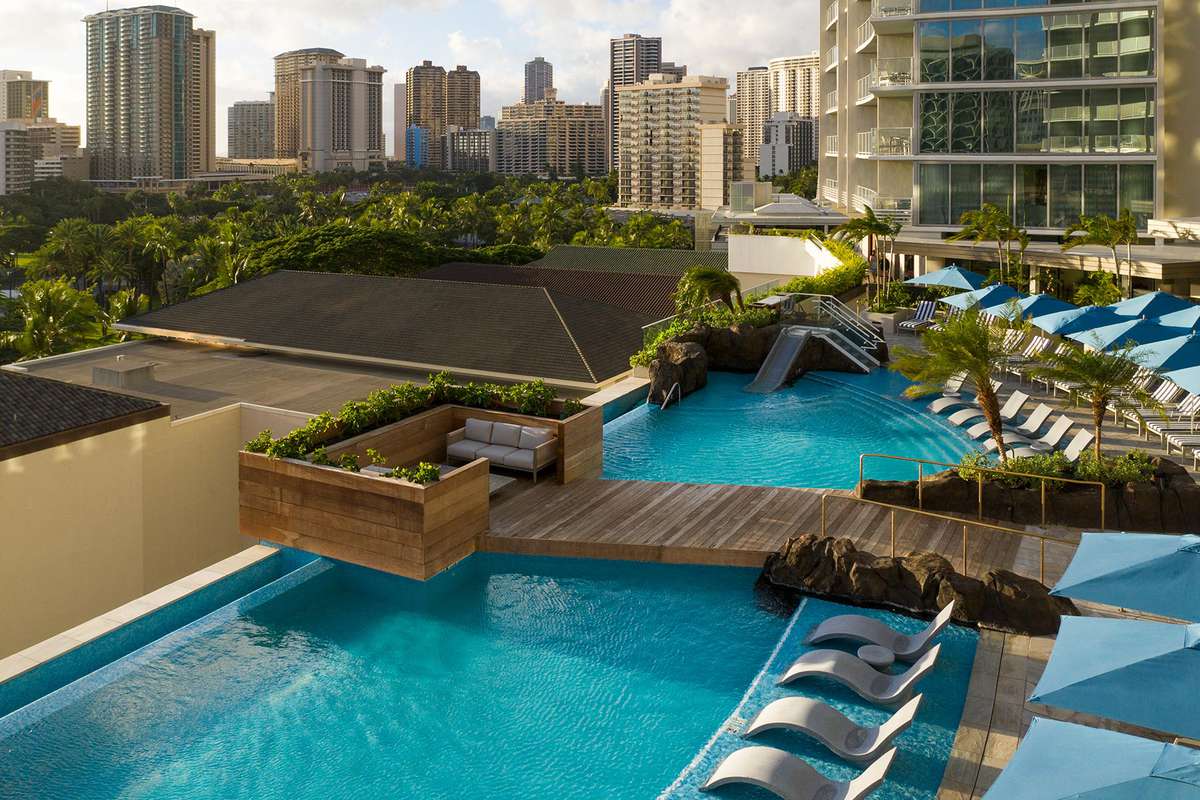How Waikiki Beach Became the Luxury Hot Spot It Is Today
Waikiki Beach today is thought of as the jewel of Honolulu. A waterfront neighborhood in Hawaii's capital, Waikiki sits on a pristine beach that looks out toward the iconic Diamond Head crater. The streets are lined with luxury boutiques, award-winning restaurants, and city culture, 2,500 miles off the mainland.
That's the Waikiki Beach I know. I visited in 2018, to see the new Diamond Head Tower at The Ritz-Carlton Residences, Waikiki Beach — and was struck by how I could fly nearly 3,000 miles from my home in L.A., and wind up in a city that reminded me so much of Beverly Hills.
If you rewind a few decades, Waikiki looked nothing like the bustling luxury hub it is today. Fifty years ago, it was more of a kitschy tourism area, where visitors would stop by for a souvenir on their way to other Honolulu attractions. The hotels that Waikiki Beach is now synonymous with — The Ritz-Carlton Residences, Waikiki Beach, Surfjack Hotel & Swim Club — didn't exist back then, which was fine, because no one stayed in Waikiki.
Huy Vo, director of public relations at The Ritz-Carlton Residences, Waikiki Beach, was the person who introduced me to the area and taught me about the evolution of Waikiki. Have you ever wondered how your favorite luxury hot spots came to be? When I first met Vo in 2018, I realized I'd never bothered to ask how my local version of Waikiki (Beverly Hills) had come to be. But Vo, who was born and raised in Honolulu — he's been there nearly 40 years — has seen Waikiki Beach evolve firsthand. He's been coming to the beach with friends and family since he was a kid.
"Gone are the days of first-time visitors wearing matching loud island prints with fanny packs and arriving in tour buses," Vo explains when I circle back to him — three years later — to discuss the evolution of Waikiki. "Now, [Waikiki welcomes] stylish global jetsetters with Tom Ford sunglasses and Goyard luggage arriving in exotic cars."
Vo says the neighborhood — which is actually only 1.5 square miles, though the enclave feels much larger because it's become an epicenter of culture in Honolulu — has changed "from the old, nostalgic, kitschy vibe to the now modern and vibrant destination that it is today."
So, what changed? The answer, more often than not, is hospitality infrastructure. Hotels bring people into a neighborhood, suddenly making it a home base, rather than a spot you pass through en route to another attraction. And that's exactly what happened in Waikiki. In the '70s and '80s, Waikiki wasn't seen as a luxury destination — partially because five-star accommodations didn't really exist here.
"Halekulani was really the only luxury hotel back then, which was established in 1984, followed by a long gap until The Royal Hawaiian became a Luxury Collection [hotel] in 2008," says Vo. The year after, Trump International Hotel opened — and then, in 2016, The Ritz-Carlton opened their first property on Oahu, debuting The Ritz-Carlton Residences, Waikiki Beach.
The 2000s brought international visitors to Waikiki on a scale the neighborhood had never seen. And it wasn't just tourists that came flocking once hotels began popping up — the business travelers headed for Honolulu would instead opt to stay along the coastline of Waikiki, now that they had their pick of luxury accommodation.
"The influx of international visitors, especially from Japan, really prompted luxury retail brands to leave their footprint in the Waikiki market in the '90s and early 2000s — with the opening of Louis Vuitton in the iconic Gump Building in the '90s, followed by Luxury Row (the Rodeo Drive of Waikiki) in 2005 with the opening of Chanel, Gucci and Bottega Venetta," says Vo.
When you're looking out at Waikiki Beach from The Ritz-Carlton Residences eighth-floor pools (the two highest infinity pools in Waikiki), it's hard to imagine this area as anything other than a luxury hot spot. And yet, it's where I was sitting with Vo when I first learned how this destination came to be. This 1.5-square-mile neighborhood exudes luxury, from the Maseratis rolling down the street to the restaurants that are so hard to book that visitors will plan their Hawaii trips around when they can get a reservation. Being in Waikiki reminds me of visiting downtown Miami, watching the yachts dock at Zuma for a sushi dinner, or pulling up to the Beverly Wilshire in L.A. and feeling instantly more glamorous. It is a neighborhood where you feel chic just walking around.
All this to say that, the '90s in Waikiki Beach — when the lot below The Ritz-Carlton Residences, Waikiki Beach was vacant — feels a world away from the Waikiki of today.
"I remember riding the city bus into Waikiki when I was in high school and seeing the area boarded up," Vo recounts. "Not many people know that [the lot] was the original location of the iconic Hula's Bar & Lei Stand before it moved to its current location on Kapahulu Avenue."
The lot stayed vacant until Irongate, the developer of The Ritz-Carlton Residences, Waikiki Beach, broke ground in 2013 and started building a luxury condominium.
"When the project started, it really paved the way for extensive redevelopment of the Kuhio Avenue corridor — the other main Waikiki thoroughfare that runs perpendicular to Kalakaua Avenue, which was in dire need of revitalization," says Vo.
"Back then, you really had to be careful walking down Kuhio Avenue because it was quite seedy. The opening of our resort in 2016 coincided with the reopening of the International Marketplace and debut of new vibey boutique hotels such as Surfjack Waikiki, The Laylow Waikiki, and Hyatt Centric Waikiki, which many attribute to the birth of the new Waikiki along Kuhio Avenue," he concludes.
While there is certainly a new Waikiki that's taken hold — anchored by hotels like the Ritz and Surfjack, as well as coveted shopping and culinary experiences — one thing has remained a constant over the neighborhood's 50-year evolution.
"[It's] the spirit of aloha," says Vo. "Hawaiian hospitality is like no other. You'll experience that anywhere you go in Waikiki."
Source: Read Full Article








